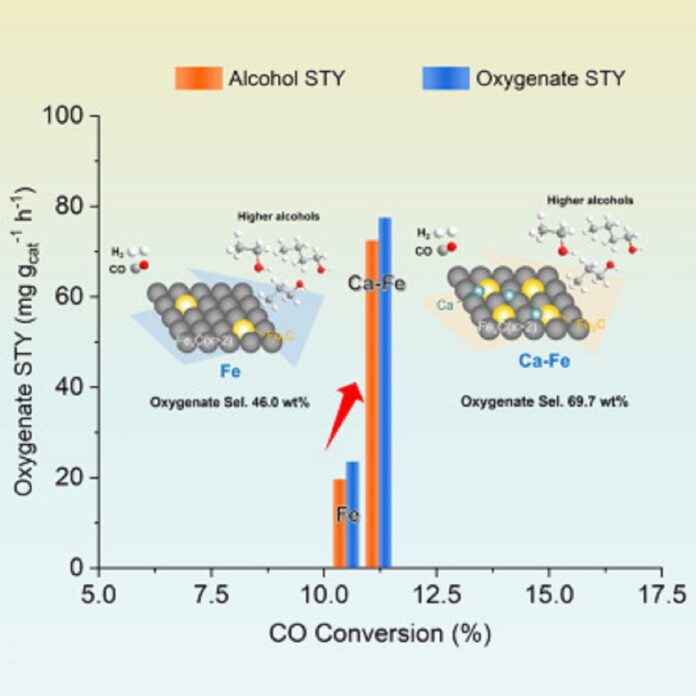Higher alcohols (C2+alcohols) are important raw materials that have been used as intermediates in the production of valuable products. They are also widely used in the fuel, food, fine chemicals, pharmaceutical, and energy or syngas conversion industries. However, due to the coordination of CO dissociative and non-dissociative sites, higher-alcohol synthesis via syngas remains difficult.
To address this, the researchers designed co-existing Ca-Fe catalysts to optimize active sites in CO hydrogenation and regulate product synthesis.
With the depletion of petroleum resources, direct synthesis of higher alcohols from syngas has emerged as a sustainable and potential process due to its abundant raw materials and high atomic utilization. However, the industrial application is limited due to the low yield of higher alcohols.
Direct synthesis of higher alcohols from syngas has been accomplished by a research team led by professors SUN Jian and GE Qingjie from the Dalian Institute of Chemical Physics (DICP) of the Chinese Academy of Science (CAS)—highly selective production of higher alcohols from CO hydrogenation over synergistic iron carbides catalysts.
Prof. SUN said, “The proposed synergistic Ca-Fe series catalysts could realize a oxygenate selectivity of 69.7 wt% under mild conditions, alongside the alcohols fraction of 86.4 % in oxygenates. The total oxygenates, and alcohols selectivity outperformed the results of previously reported catalysts.”
According to the researchers, Ca loading enabled the Ca-Fe catalyst to produce high-surface iron carbides with a proper Fe2C/(Fe5C2+Fe3C) ratio. To produce higher alcohols, the Fe5C2 and Fe3C as CO dissociative sites could benefit from a synergistic effect with Fe2C (CO non-dissociative sites).
As a result, the proper Fe2C/(Fe5C2+Fe3C) ratio helped to balance the dissociative and non-dissociative properties of CO. It improved the cooperation of *CO and *CHx to form the CHx-CO species, which promoted higher alcohol formation.
Prof. SUN said, “This study extends our understanding of the important role of Ca and provides a new strategy for the design of catalysts in CO hydrogenation to higher alcohols.”
Journal Reference:
- Xu, Zhang, Sun, J. Precisely synergistic synthesis of higher alcohols from syngas over iron carbides. Chem Catalysis. DOI: 10.1016/j.checat.2023.100584
